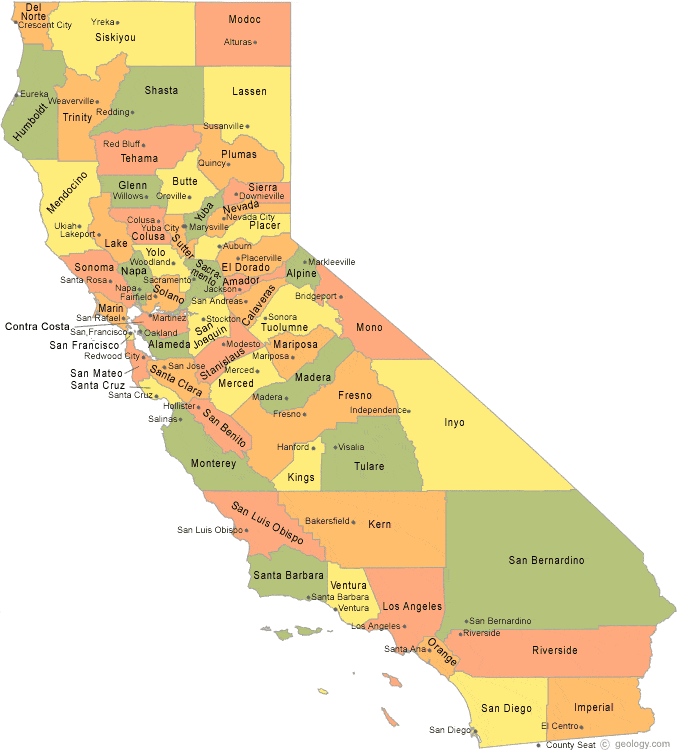
Trying to find out how many counties are in California? You’re not alone. Be it for research, a road-trip map, or pub-quiz glory, the number 58 keeps popping up, and still that single digitis just the first layer of a deeper tale.
California’s counties form an incredibly diverse mosaic: fog-kissed seaside towns, high-elevation wilderness zones, fertile Central Valley breadbaskets, and thriving tech metropolises. Every county has a chapter in the state’s saga, shaped byimmigration waves, promising new industries, and waves of cultural fusion.
In the sections ahead, we’ll dig intothe timeline that locked the total at 58, the real responsibilities counties shoulder, and the how many counties in cali record-holders—from the tiniest to the most populous. When we’re done, you’ll own the knowledge—and map your next California adventure with confidence.
Origins of California’s 58 Counties
Upon admission to the United States, the map contained barely half the jurisdictions we know now. A tidal wave of forty-niners and immigrants pushed officials to subdivide vast districts. Before the century turned, the count had risen to over five dozen counties, and that same year the final five were added, setting in stone the canonical figure of fifty-eight.
Legislative records show that fresh jurisdictions were born because of a trio of factors:
- Geographic isolation turned routine business into week-long trips.
- Tax disputes between miners and farmers ignited partition drives.
- Cultural rivalries demanded tailored governance.
Within a single generation, the political map settled. Today, no proposal to add a 59th county has cleared committee, leaving historians to label the era of county making decisively over.
Landscape and Climate Diversity Across California Counties
Plot a route from the Smith River watershed to sun-baked Imperial touching Mexico, and you’ll cross a climatic kaleidoscope. Pacific-facing districts enjoy marine layers and mild winters, while great agricultural belts battle drought cycles.
- Mountain counties such as Mono, Mariposa, and Calaveras host ski resorts.
- Sacramento–San Joaquin fringe counties balance peat islands and orchards.
- Channel-coast administrators like Ventura license film crews on beaches.
This breadth clarifies the stark fiscal gaps between counties. Weather sets tax bases and lifestyles.
Behind the Scenes at the County Level
In California’s layered structure, cities tackle local bylaws, but county boards oversee vital “unseen” duties that hold civilisation together. From birth to death—marriage licenses, tax rolls, voter registries—all are archived at the county clerk or recorder.
County law-enforcement offices patrol vast rural stretches, while superior courts hear felony cases. Health departments distribute food assistance. Tax-allocation showdowns spark long agenda nights.
Case Study: Tiny Alpine County
Los Angeles County alone employs 100 000+ workers, showing how flexible county governance proves. There’s no single blueprint when land areas shift from 47 to 20 000 sq mi.
At day’s close, these 58 mini-capitols bridge Sacramento’s big laws and local reality. Knowing their role guides newcomers navigating paperwork.
Where the People and Money Are
The state shelters over thirty-nine million people, but the headcount clusters unevenly. LA County by itself packs nearly 25 %. Conversely, tiny Alpine County hovers around a thousand residents.
- Largest population: County of Los Angeles
- Fewest people: Alpine County
- Widest landmass: San Bernardino County
- Tightest borders: San Francisco
Economically, the disparities are just as sharp. Tech-centric jurisdictions report six-figure median incomes, while Central Valley breadbaskets battle mechanisation and drought cycles. These fiscal contrasts informs legislative redistricting every decade.
Tracking each superlative pays dividends: county borders redraw home-buying budgets and business licences.
Touching All Counties in One Journey
For intrepid travellers, bagging all 58 jurisdictions ranks as a top geo-challenge. One ambitious loop kicks off in San Diego, follows Highway 101 past surf towns, swings through Santa Cruz, then zigzags across nut groves and tomato fields, before ascending into the high Sierra for ghost towns and mining museums.
Three-Day County Clusters
- Coastal Kick-off – San Diego to Santa Barbara; 10 counties in a long weekend of days.
- Heartland Stretch – Grapes to rice paddies; eight hours of orchards.
- Shasta & Siskiyou Turn – crater-rim roads; fire-lookout hikes.
Finish the circuit in Imperial, after two thousand kilometres of asphalt. At that point, you can brag that you’ve lived the answer to the county-count question—because you’ve seen them all!
FAQ
Below you’ll find concise answers to the most common county-related queries.
How many counties does California have?
State records confirm fifty-eight counties—a total locked in for over a century. Check any authoritative source, and you’ll find the same figure: 58 in all.
Which county has the largest population in California?
LA County leads by a wide margin, home to over 10 million residents. Decades of immigration, entertainment dominance, and job growth keep the numbers high.
Which CA county has the fewest residents?
Tiny Alpine County sits at the bottom of the population chart, often cited at just about a thousand souls. Location along rugged mountain corridors naturally restricts settlement, making it a haven for solitude seekers.
What is California’s biggest county geographically?
Geographic titan San Bernardino County stretching more than 20 000 square miles. Its sheer scale means climate zones shift from alpine snow to Mojave heat within county lines.
What historical events fixed the number at 58?
Early statehood growth pressures split larger districts into smaller units, wrapping up after Imperial broke from San Diego in the early 20th century. Since then, proposals to add a 59th county have surfaced but never cleared the Legislature.
Could a region break away to become its own county today?
Legally, yes—state law allows it, though the process is arduous. A break-off region must gather local signatures, win a majority vote in each affected county, and secure legislative approval. Consequently, boundaries have frozen for over a century.
Which responsibilities fall to county governments?
Counties handle the backbone of local governance: property assessments, public hospitals, welfare programs, and jails. Their wide remit bridges state mandates with community needs, making the 58 jurisdictions essential to all Californians.